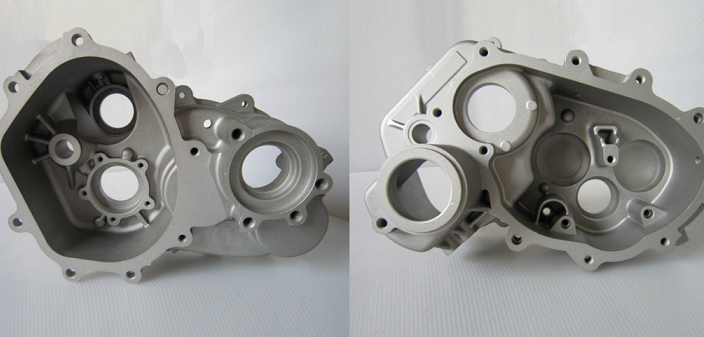Aluminum die casting is a widely used manufacturing process for producing complex and precision components. However, like any manufacturing process, it is not immune to defects. Understanding the causes of these defects and implementing effective solutions is crucial for ensuring high-quality aluminum die castings. In this article, we will delve into the causes of various defects commonly found in aluminum die castings and explore potential solutions.

1. Porosity
Porosity refers to the presence of voids or gas pockets in the casting. It can significantly compromise the mechanical properties and overall integrity of the component. Common causes of porosity in aluminum die castings include inadequate venting, high turbulence, and improper gating design. During the casting process, if air or gas is trapped in the molten metal, it can lead to porosity.
How to Solve It
To minimize porosity, improving venting is essential. Proper venting allows trapped air and gases to escape, reducing the likelihood of porosity formation. Additionally, optimizing the gating system design, such as using overflow gates or adding additional vents, can enhance metal flow and reduce the risk of porosity.
2. Cold Shuts
Cold shuts are defects that occur due to insufficient fusion of molten metal during solidification. Inadequate fusion can result from low metal temperature, an inadequate gating system, or high casting speed. When the molten metal solidifies before complete fusion occurs, cold shuts appear as incomplete or weak bonds in the casting.
How to Solve It
To address this issue, it is important to ensure proper metal temperature during the casting process. Maintaining a suitable temperature range helps to improve the fluidity of the molten metal, allowing for better fusion and reducing the likelihood of cold shuts. Moreover, optimizing the gating system design and controlling the casting speed can also contribute to minimizing this defect.
3. Shrinkage
Shrinkage is a defect caused by the reduction in volume that occurs during the solidification of the molten metal. It commonly manifests as voids or localized shrinkage. Several factors contribute to shrinkage defects, including improper cooling and feeding system design, inappropriate alloy selection, and inadequate riser design.
How to Solve It
To mitigate shrinkage defects, optimizing the cooling and feeding system design is crucial. Proper cooling can ensure uniform solidification and minimize the formation of shrinkage voids. Ensuring a suitable feeding system, such as using risers, can provide additional molten metal to compensate for the volume reduction during solidification, reducing the risk of localized shrinkage.
4. Hot Tears
Hot tears, or cracks, are defects that occur during the solidification process due to thermal stresses. They can result from high-temperature differentials, inadequate cooling, or improper design. When the thermal stresses exceed the material’s strength, cracks can form in the casting.
How to Solve It
To prevent hot tearing, it is important to control the cooling rate of the casting. Proper cooling allows for uniform solidification and reduces thermal gradients, minimizing the likelihood of crack formation. Additionally, redesigning the casting geometry, such as adding fillets, removing sharp corners, or adjusting wall thickness, can alleviate thermal stresses and improve the overall resistance to hot tears.
In addition to the specific defects mentioned above, other common defects in aluminum die castings include flashes, misruns, and distortion. Flash refers to excess material that is expelled from the mold during the casting process. Misruns are incomplete castings that do not fully fill the mold cavity. Distortion is a change in the shape or dimensions of the casting due to residual stresses or uneven cooling. The causes and solutions for these defects can vary and may require specific process adjustments or mold design modifications.
Summary
To ensure high-quality aluminum die castings, it is essential to implement effective process monitoring and quality controls. By utilizing advanced technologies such as process monitoring sensors and inspection techniques, manufacturers can identify defects in real time. This enables timely adjustments and quality control measures to be implemented, minimizing the occurrence of defects and ensuring consistent manufacturing quality.
In conclusion, defects in aluminum die castings can arise from various causes, ranging from inadequate venting and gating design to improper cooling and alloy selection. By addressing these causes and implementing appropriate solutions, manufacturers can significantly reduce or eliminate defects. Optimizing the design of the gating and venting systems, controlling process parameters, modifying alloy composition, redesigning the casting geometry, and implementing process monitoring and quality controls are key measures for improving the quality and reliability of aluminum die castings.